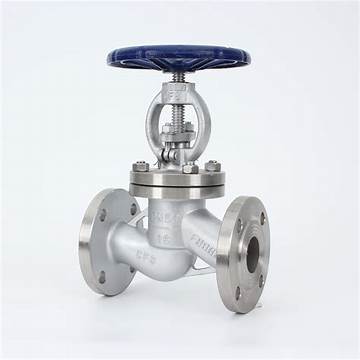Electric Actuator Solutions for Efficient Gate Valve Operation in Industrial Applications
Electric Actuator for Gate Valves A Comprehensive Overview
In the realm of industrial automation, electric actuators are pivotal components in the control of gate valves. These devices play a crucial role in regulating the flow of fluids in pipelines, making them essential for a myriad of applications, including water treatment, oil and gas, and chemical processing. This article explores the fundamentals of electric actuators for gate valves, their advantages, and considerations for their implementation.
Understanding Electric Actuators
Electric actuators convert electrical energy into mechanical motion, enabling precise control of valves. Unlike manual actuators, which require human intervention, electric actuators allow for automated control, thereby enhancing efficiency and safety in industrial operations. These devices can be easily integrated into existing control systems, allowing operators to manage valve functions remotely and in real time.
The Role of Gate Valves
Gate valves are commonly used in applications where a straight-line flow of fluid and minimal pressure drop are essential. They are primarily designed to be either fully open or fully closed, making them ideal for on/off service. When paired with electric actuators, gate valves provide a reliable means of controlling the flow of liquids and gases in various systems.
Advantages of Electric Actuators for Gate Valves
1. Automation and Remote Control One of the primary benefits of electric actuators is their ability to automate valve operations. This feature is particularly advantageous in hazardous environments where manual operation may pose risks to personnel. By enabling remote control, operators can manage flow control without direct exposure to dangerous conditions.
2. Precision and Speed Electric actuators offer high precision in positioning and can operate at varying speeds, allowing for tailored flow control based on system demands. This capability ensures that processes run smoothly and efficiently, minimizing the risk of over or under-fluctuation in flow rates.
3. Energy Efficiency Compared to pneumatic or hydraulic actuators, electric actuators are generally more energy-efficient. They require less energy to operate because they derive power from the electrical grid and have fewer components that consume energy, leading to cost savings for industrial applications.
electric actuator for gate valve

4. Low Maintenance Costs Electric actuators have fewer moving parts than their pneumatic or hydraulic counterparts. This simplicity reduces the likelihood of mechanical failure and minimizes maintenance requirements. Regular inspections and occasional lubrication are typically all that is needed to keep them in optimal condition.
Considerations for Implementation
While electric actuators offer numerous advantages, there are important factors to consider during implementation
1. Power Supply Electric actuators need a stable power supply to function effectively. It’s crucial to assess the availability of electrical infrastructure and ensure that it meets the demands of the actuators involved.
2. Environmental Conditions The suitability of electric actuators can be influenced by environmental conditions such as temperature, humidity, and exposure to corrosive substances. Selecting actuators with appropriate ratings and protective features is essential for longevity and performance.
3. Integration with Control Systems A seamless integration with existing control systems is vital. Compatibility with automation platforms and communication protocols can enhance the overall effectiveness of the system.
4. Sizing and Torque Requirements Correctly sizing electric actuators is crucial to ensure that they deliver the required torque for opening and closing gate valves under various pressure conditions. Oversized or undersized actuators can lead to performance issues and increased wear.
Conclusion
Electric actuators for gate valves are invaluable in modern industrial processes, offering automation, precision, and reliability. Understanding their functions, advantages, and specific implementation considerations can greatly enhance their effectiveness in any application. As industries continue to evolve towards smarter, more automated solutions, the role of electric actuators will undoubtedly expand, providing more efficient and safer operations throughout the manufacturing and processing landscapes.
-
The Key to Fluid Control: Exploring the Advantages of Ball Valves in Industrial SystemsNewsJul.09,2025
-
The Versatile World of 1, 2, and 3 Piece Ball ValvesNewsJul.09,2025
-
Stainless Steel Ball Valves: The Ideal Choice for Efficient Flow ControlNewsJul.09,2025
-
Optimizing Fluid Control with Ball Float ValvesNewsJul.09,2025
-
Manual Gate Valves: Essential for Control and EfficiencyNewsJul.09,2025
-
Everything You Need to Know About Butterfly ValvesNewsJul.09,2025
-
The Versatility of Wafer Type Butterfly ValvesNewsJul.08,2025




